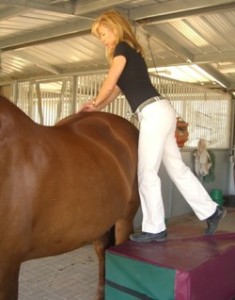 Although there has been anecdotal evidence of chiropractic therapy being used on animals for centuries, there was no formal organization or training available until the mid-1980s. Today there are hundreds of licensed animal chiropractors in almost every state of the USA. They practise on everything from dogs and cats to exotic animals in zoos.
Although there has been anecdotal evidence of chiropractic therapy being used on animals for centuries, there was no formal organization or training available until the mid-1980s. Today there are hundreds of licensed animal chiropractors in almost every state of the USA. They practise on everything from dogs and cats to exotic animals in zoos.
This mirrors a growing interest in alternative therapies in veterinary medicine. Homeopathic medications, acupuncture, and massage therapy have all seen huge growth in the last two decades. The public’s interest in new methodologies and more natural treatment methods for the pets have led them down the same paths as human medicine.
It has also seen sharp divisions arise in the pet industry regarding vaccinations and traditional treatment methods for handling parasites. Things have changed from when everyone vaccinated their pets every year to complex instructions that vary widely from vet to vet. Some owners have eschewed vaccinations altogether or only provide initial vaccinations and then rely on titers to evaluate immunity levels in subsequent years.
Chiropractics therapy has become particularly popular with those who participate in sports with their animals or who have animals that have a job to do. The increased stress experienced by joints and the injuries that come from repetitive jumping, dodging to avoid hooves, and running over uneven ground can lead to pinched nerves, neck and spinal issues. In years past, these injuries would have been ignored or treated with pain medication. Now, they can be eliminated without chemical intervention. It has also made a huge difference in quality of life for animals suffering from arthritis, joint diseases, and painful degenerative conditions.
The equine industry has become a huge proponent of chiropractic care for draft, racing and eventing horses. Many stables have regular visits from chiropractors and there is sufficient interest in the field that some chiropractors specialize in and only treat horses.
Becoming an animal chiropractor requires returning to school. You must already be either a veterinarian or a human chiropractor to qualify to take the courses. Many regular veterinarians are upgrading their education to be able to offer therapy to their patients. Others have chiropractors that work out of their clinics several days of a month.
Not surprisingly, zoos and owners of exotic animals have also turned to chiropractic as a way to help their charges. Some chiropractors have found themselves treating elephants, rhinoceros, pandas, and gorillas. Spinal adjustments can be beneficial to all species.
Many pet owners have found that when traditional medicine has been unable to find the answer, an alternative therapy such as chiropractic helps. It makes sense for veterinarians to be able to offer these services to their clients.





